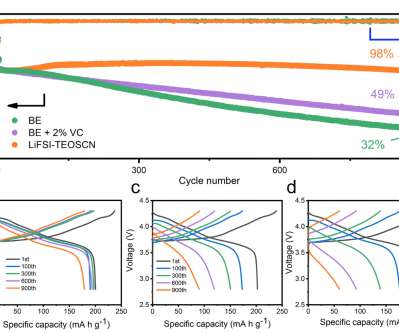New self-purifying electrolyte for high-energy Li-ion batteries
Green Car Congress
MAY 15, 2022
A research team in China has developed a new type of electrolyte for high-energy Li-ion batteries with a self-purifying feature that opens a promising approach for electrolyte engineering for next-generation high-energy Li-ion batteries. A paper on their work is published in the RSC journal Energy & Environmental Science.






























Let's personalize your content